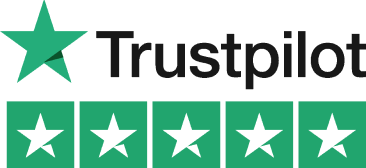What's a self-employed tax return all about?
Doing your taxes when you work for yourself doesn’t have to be scary. It’s just about telling HMRC what you’ve earned and spent throughout the tax year.
If you’re self-employed in the UK, you need to file a tax return each year. This covers money you made from 6th April to 5th April the following year, which is different from the calendar year many people expect. The tax return covers the previous tax year, which runs from 6th April to 5th April.
Unlike employees who have tax taken from their wages automatically, you need to work out and pay your own tax when self-employed. Even if you have a regular job alongside your self-employment, you’ll still need to report your extra earnings.
The good news? Once you understand the basics, it gets much easier each year as you become familiar with the process.
What does "doing a self-employed tax return" actually mean?
When you’re self-employed, doing a tax return means filling out a form for HMRC that shows all your business income and expenses. You’ll need to calculate how much profit you made, which is what you’ll pay tax on.
The form is called a Self Assessment tax return, and most people now complete it online through the HMRC website. You’ll also work out how much National Insurance you need to pay on your earnings.
Accurately calculating your tax liability is crucial to ensure you pay the correct amount of tax. The goal is to report everything correctly so you pay the right amount of tax – not too much, not too little. This ensures you stay compliant while not paying more than necessary.

When should you register for Self Assessment?
As soon as you start working for yourself, you should tell HMRC. Don’t wait until the last minute, as registration takes time to process.
The official deadline is 5th October after the tax year in which you started your business. Miss this, and you could face fines that increase the longer you delay.
Registering is easy – just visit the HMRC website and follow the steps to register as self-employed. After registering, you’ll get a Unique Taxpayer Reference (UTR) number that you’ll need every year. You will also need your National Insurance number when registering for self-assessment.
You’ll also set up a Government Gateway account, which is your online doorway to all things tax-related. Allow about 10 days for your registration details to arrive before you can file online.
What records do you need to keep?
Good record-keeping makes tax time so much easier. I learned this the hard way my first year when I spent days sorting through piles of receipts and bank statements!
Keep all receipts, invoices, and bank statements related to your business. Digital copies are fine, and many people find scanning apps helpful for keeping everything organised.
Track every penny coming in (income) and going out (expenses) throughout the year. If you have property income, it should be included in your records alongside other types of income. If you use your car for business, keep a mileage log with dates, destinations, and reasons for trips.
Don’t forget to keep records of any assets you buy for your business, like computers or equipment. HMRC says you must keep these records for at least 5 years after the tax return deadline.
Many self-employed people find a simple spreadsheet works well for basic record-keeping. However, dedicated apps can make the process even smoother.

How do you actually fill in your tax return online?
First, log in to your HMRC online account using your Government Gateway ID and password. Select the right tax year and go to the self-employment section (sometimes called SA103).
Enter your total income from all your invoices and sales for the year. Then list all your allowable business expenses in the right categories provided by HMRC.
The system will calculate your profit and how much tax you owe based on your entries. Check everything carefully before hitting submit – you can save and come back to it if needed.
The final deadline for online returns is 31 January after the tax year ends. Don’t leave it until the last minute, as the HMRC website often slows down due to high traffic on deadline day.
Meeting the tax payment deadline is crucial to avoid penalties and fines imposed by HMRC for late submissions.
Filing Online vs. Paper Tax Return
When it comes to submitting your tax return, you have two main options: filing online or using a paper tax return. Filing your Self Assessment tax return online is the fastest and most secure method.
The HMRC website guides you through the process, and you can also use an accountant or tax agent if you prefer. One of the biggest advantages of filing online is the instant acknowledgment of receipt, giving you peace of mind that your tax return has been successfully submitted.
On the other hand, paper tax returns can be more time-consuming and prone to errors. They take longer to process, and there’s always the risk of them getting lost in the post.
While some people might prefer the tangible nature of paper forms, the convenience and efficiency of filing your tax return online make it the preferred choice for most self-employed individuals.

What business costs can you claim to reduce your tax?
One of the best things about being self-employed is being able to claim business expenses to lower your tax bill. Office costs like stationery, printer ink, and software subscriptions are all claimable.
Travel costs for business purposes, including train tickets, fuel, and even vehicle insurance can be claimed. If you work from home, you can claim a portion of your household bills like heating and internet.
Phone bills used for business calls are allowable expenses too. Don't forget things like professional memberships, work-related training, and business insurance.
Marketing costs like business cards, website fees, and advertising are all tax-deductible. Remember, though, that expenses must be "wholly and exclusively" for business purposes to qualify.
How can you legally pay less tax when self-employed?
Claim every legitimate business expense – even small items add up over a year. Consider paying into a pension, as self-employed pension contributions get tax relief.
If your business income is very low (under £1,000), look into the Trading Allowance which might mean you pay no tax. Time big purchases carefully – buying equipment just before the tax year ends can reduce that year’s tax bill.
If you are in a business partnership, you need to complete the Partnership Tax Return (Form SA800) and submit it alongside your individual tax return.
If family members genuinely help in your business, you might be able to pay them a salary. Keep business and personal spending separate with a dedicated business account to make claiming easier and more accurate.

Paying Tax and National Insurance
Once you’ve submitted your tax return, HMRC will calculate how much you owe based on the information you’ve provided. Your Self Assessment bill must be paid by 31st January following the end of the tax year. The amount of tax you pay depends on the Income Tax band you’re in, and if you have any capital gains, such as from selling shares or a second home, you’ll need to pay Capital Gains Tax at a different rate.
In addition to income tax, you’ll also need to pay National Insurance contributions on your self-employed income. These contributions help fund state benefits and the NHS, so it’s important to ensure they’re paid on time. Keeping track of these payments can help you avoid any surprises when your tax bill arrives.
What are the common mistakes to avoid?
Missing the deadline is the biggest mistake – it triggers an automatic £100 fine, which increases over time. Forgetting to keep receipts means you might miss out on claiming legitimate expenses.
Claiming personal expenses as business costs can get you in trouble with HMRC. Not setting aside money for your tax bill throughout the year can lead to payment shocks when the bill arrives.
Forgetting to include all income sources on your return – HMRC often knows more than you think! Not checking your calculations before submitting can lead to paying too much tax or facing penalties later.

Penalties and Appeals
Missing the deadline for filing your tax return can result in fines, starting with an automatic £100 penalty. If you continue to delay, additional fines of £300 or 5% of the tax due (whichever is greater) can be imposed. On top of that, you may be charged interest on any outstanding amount, which can quickly add up.
If you disagree with the amount of tax HMRC says you owe, you have the right to appeal. You can also appeal against a penalty if you have a reasonable excuse for not filing your tax return on time. It’s important to communicate with HMRC and provide any necessary documentation to support your appeal, ensuring your case is reviewed fairly.
By understanding these aspects of the Self Assessment process, you can navigate your tax obligations with confidence and avoid common pitfalls.
Is there an easier way to handle self-employed taxes?
Keeping on top of your bookkeeping throughout the year makes tax return time much simpler. Many self-employed people find tax apps helpful for tracking income and expenses on the go.
Pie is the UK's first personal tax app designed specifically for working individuals dealing with self-assessment. It combines bookkeeping with real-time tax calculations and simplified return filing.
Unlike traditional methods, using a dedicated tax app means you can see how much tax you'll owe as the year progresses – no nasty surprises. Having all your tax information in one place makes filing your return much quicker when the deadline approaches.
For peace of mind, consider getting help from a tax professional if your situation is complicated. The cost often pays for itself in tax savings and reduced stress.

Final thoughts on self-employed tax returns
Doing your self-employed tax return gets easier each year as you become familiar with the process. Start early, keep good records, and set aside regular time for your bookkeeping.
Remember that paying your taxes correctly keeps your business legitimate and avoids stress down the line. With the right approach, tax return season doesn't have to be something you dread.
Why not check out Pie.tax to see how their app could make your next self-assessment easier and more accurate? Your future self will thank you when tax deadline day comes around!




